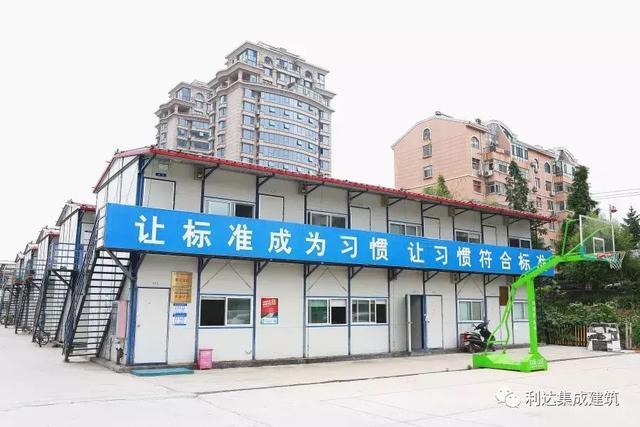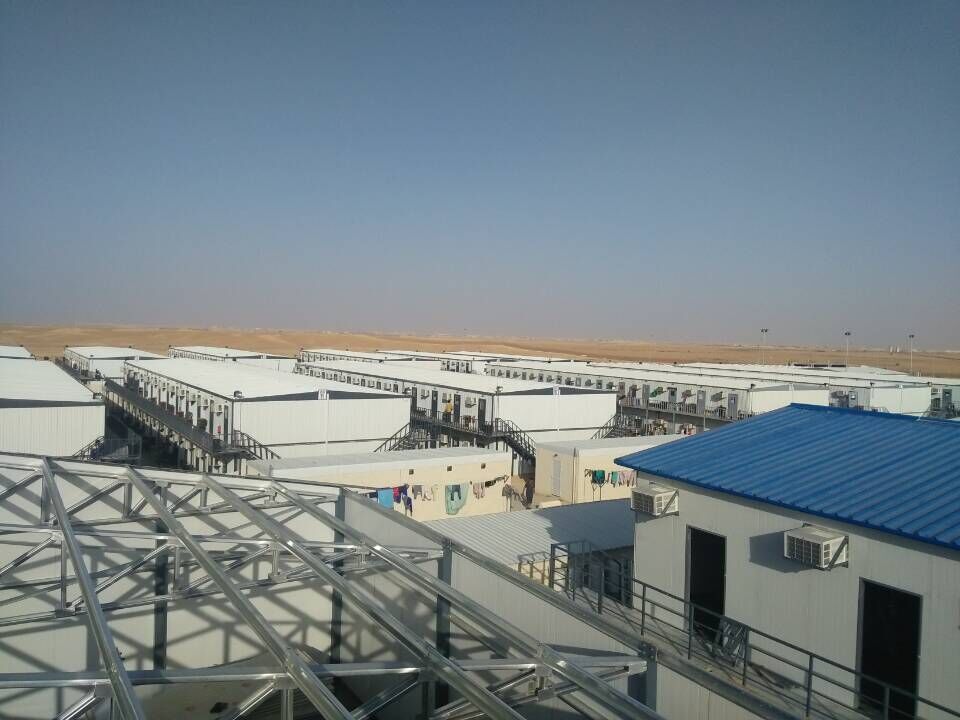Tel: 0086-532-88966982
0086-532-88965892
Website: www.lidajituan.com
E-mail: sales@lidajituan.com
Head office: 5th Floor, Building A, Darron Center, 180 Haier Road, Qingdao, 266000, China
The Silent Revolution Rising from Factory Floors: How Prefab Houses Are Reshaping Construction Landscapes
Classification:Company News
Release time:2025-07-16 14:00
The Silent Revolution Rising from Factory Floors: How Prefab Houses Are Reshaping Construction Landscapes
In the pre-dawn hours outside Jakarta, a transformation unfolds without fanfare. Inside Lida Group’s manufacturing facility, sparks fly not from welding torches on some distant construction site, but from robotic arms assembling wall panels with microscopic precision. These aren’t mere building components—they’re chapters in an unfolding story where prefab houses quietly dismantle centuries of construction dogma. Across global job sites, a new reality emerges: structures born in factories now outperform their site-built counterparts in ways that fundamentally alter project economics and execution.
Beyond the Dust and Noise: Construction’s Hidden Crisis
Traditional building sites resemble orchestrated chaos—a symphony of delayed deliveries, weather-induced standstills, and trade coordination nightmares. Consider the evidence:
- A mining camp project in Mongolia lost 47 working days to sandstorms before foundations were complete
- An offshore energy platform’s control module required three rounds of electrical rework due to site moisture infiltration
- Hospital construction in the Philippines stalled for months when specialty welders became unavailable
These aren’t isolated incidents but symptoms of a system straining against modern demands. Prefabricated house solutions emerge not as alternatives, but as necessary evolutions.
The Factory as Architect: Lida Group’s Operational Alchemy
Precision Engineering Replaces Field Improvisation
Within climate-controlled factories, tolerances shrink from centimeters to millimeters. CNC routers carve steel with laser-guided accuracy while automated welding cells fuse structural members with consistency impossible amid jobsite winds. This controlled environment eliminates the "field adjustments" that plague conventional projects—no more cutting pipes to fit misaligned penetrations or shimming mispositioned beams.
Material Science Meets Industrial Discipline
Lida’s prefab building approach leverages advanced metallurgy most construction sites can’t replicate:
- Weathering steel formulations that form protective patinas in coastal environments
- Hybrid insulation systems marrying aerogel efficiency with structural rigidity
- Composite floor assemblies achieving both fire ratings and acoustic performance
These materials aren’t just specified—they’re integrated through manufacturing processes that ensure optimal performance.
The Logistics Revolution
Consider the transformation:
- Traditional sites become staging areas rather than fabrication zones
- Shipping containers transform into precision-packed kitsets with sequenced assembly instructions
- Crane operations focus on placement rather than component assembly
This logistical recalibration slashes onsite timelines while reducing material waste by up to 70%.

Real-World Transformations: Where Theory Meets Ground
Arctic Mining Outpost
When a nickel exploration team needed winter-ready housing before the tundra froze, conventional construction timelines proved impossible. Lida’s solution:
- Volumetric modular house units fabricated during site preparation
- Helicopter transport to roadless locations
- Plug-and-play utility connections activated in -45°C conditions
The camp housed geologists before the first blizzard—a timeline reduction exceeding 80%.
Disaster Response Command Center
After Typhoon Haiyan, a Philippine hospital required immediate replacement surgery suites. Lida delivered:
- Pre-equipped medical modules with integrated HVAC and power
- Rapid-deployment foundation system avoiding ground remediation
- Expandable ward configuration growing with patient loads
Functional operating theaters were receiving patients within 96 hours of site arrival.
Energy Sector Innovation Hub
An offshore operator needed hazardous-area compliant technical offices. The office prefab house solution featured:
- Explosion-proof electrical systems factory-tested before shipment
- Positive-pressure ventilation maintaining safe atmospheres
- Blast-resistant glazing certified to withstand overpressure events
Commissioning occurred during module installation rather than after construction completion.
The Unseen Advantages: Beyond Speed
Environmental Stewardship Through Precision
Factory fabrication enables resource optimization impossible onsite:
- Steel cutting patterns minimize scrap through algorithmic nesting
- Paint application achieves 98% transfer efficiency versus 60% onsite
- Energy consumption concentrates in efficient facilities rather than dispersed generators
The carbon footprint reduction often exceeds 40% for equivalent structures.
Safety Reimagined
Danger migrates from precarious heights to controlled environments:
- Welding occurs at waist height under ventilation hoods
- Material handling utilizes overhead cranes rather than manual labor
- Electrical testing happens in clean labs rather than muddy trenches
Lida’s record shows injury rates 83% below industry averages for comparable projects.
Quality as Standard, Not Exception
Controlled manufacturing enables unprecedented consistency:
- Every structural connection undergoes non-destructive testing
- Enclosure assemblies face simulated hurricane conditions before shipment
- Utility systems receive pressure testing at triple operating standards
The result? Defect rates plummet from industry norms of 15% to under 0.5%.

The Future Taking Shape
Digital Thread Integration
Building information modeling evolves from design tool to manufacturing guide:
- Robotic welders receive instructions directly from 3D models
- Component tracking continues through blockchain-enabled logistics
- Digital twins simulate decades of environmental stress before fabrication
Advanced Material Frontiers
Emerging technologies entering production:
- Phase-change materials stabilizing interior temperatures
- Self-healing coatings repairing minor abrasions
- Carbon-negative insulation derived from agricultural waste
Robotic Synergy
Field implementation accelerates through:
- Autonomous cranes placing modules with millimeter precision
- Drone swarms verifying structural alignments
- Exoskeletons enabling precise component positioning
Conclusion: Building as Verb Reimagined
The true revolution lies not in what gets built, but how building itself transforms. Prefab houses represent more than structural innovation—they signify a fundamental reordering of construction’s very nature. Where projects once meant managing chaos, they now become exercises in precision orchestration.
Lida Group’s three-decade journey reveals this evolution’s trajectory: from adapting shipping containers to engineering integrated building systems that withstand Arctic blizzards, desert heatwaves, and seismic events. Their factories now produce not just structures, but certainty—delivering projects that arrive on schedule, perform beyond specifications, and endure decades beyond conventional expectations.
As construction’s digital and industrial revolutions converge, the most profound change remains human: engineers now solve problems at drawing boards rather than job sites, tradespeople work in safety and comfort, and communities gain facilities faster than ever imagined. This silent revolution from the factory floor may lack the drama of groundbreaking ceremonies, but its impact resonates in every mining camp that shelters workers through polar nights, every hospital that withstands typhoons, and every energy facility that operates uninterrupted in hostile environments. The future of construction isn’t being built—it’s being manufactured.
prefab house,modular house,prefab building,office prefab home
Contact Us
Head Office: 5th Floor,Building A,Darron Center,No.180,Haier Road,Qingdao, 266000,China
Tel: 0086-532-88966982 88965892 Fax:0086-532-88965571
WhatsApp:+86 13793209022
Mobile/Wechat:+86-15166671720
Email: sales@lidajituan.com Website: www.lidajituan.com
Alternate Website: www.lidamodularhouse.com
Head Office: 5th Floor,Building A,Darron Center,No.180,Haier
Road,Qingdao, 266000,China
Tel: 0086-532-88966982 88965892
Fax:0086-532-88965571
Email: sales@lidajituan.com
Website: www.lidajituan.com
Alternate Websit: www.prefabhousecn.com
Wechat/WhatsApp:+86-13793209022
Copyright(c)2023 All Rights Reserved SEO Business license

